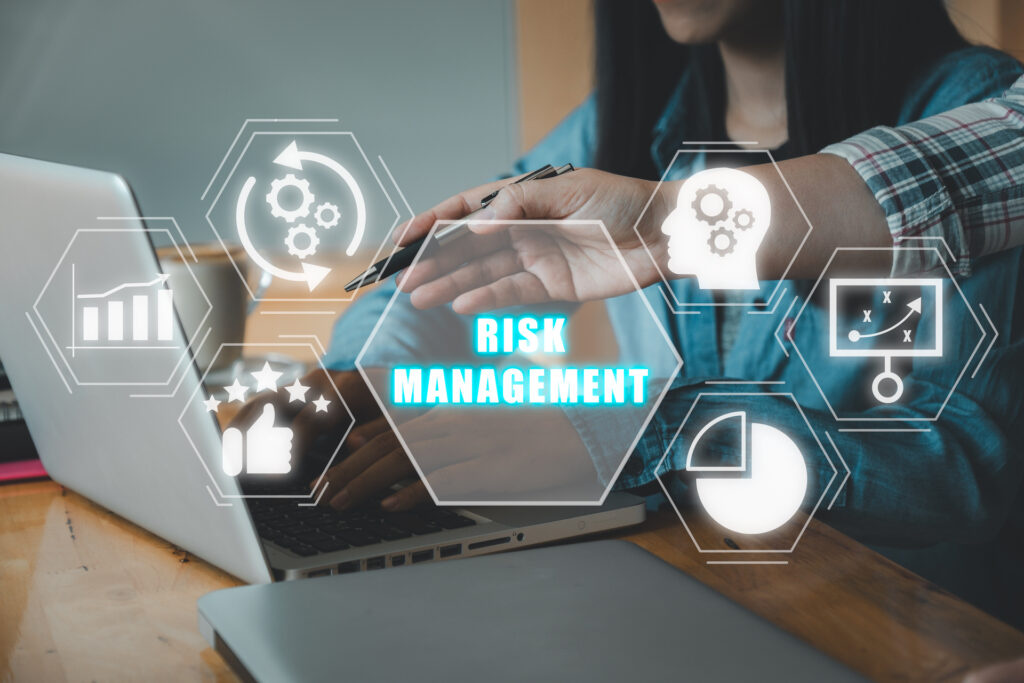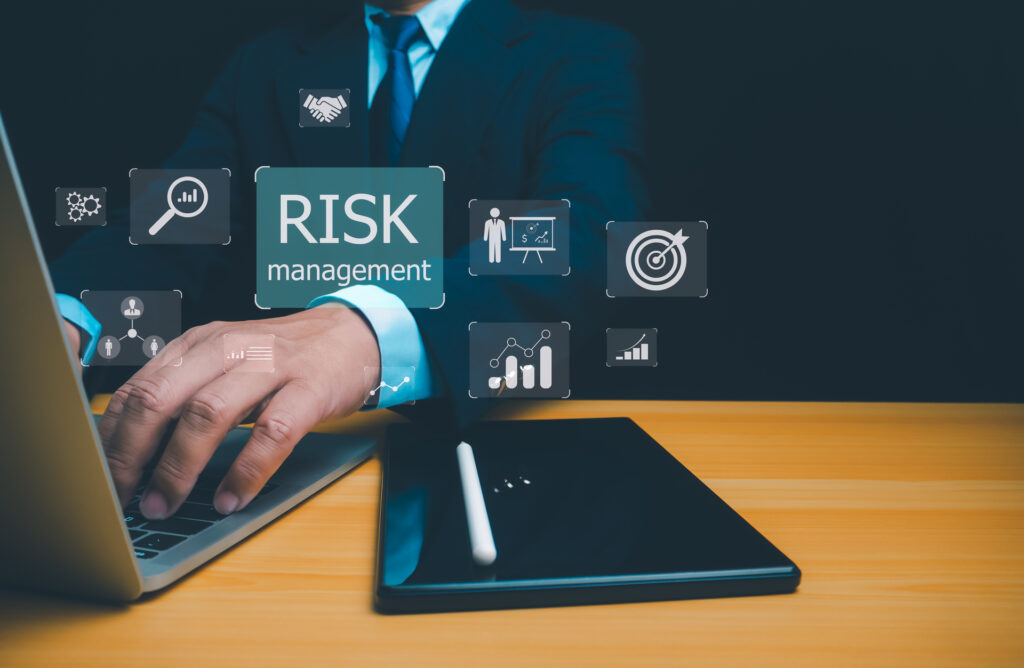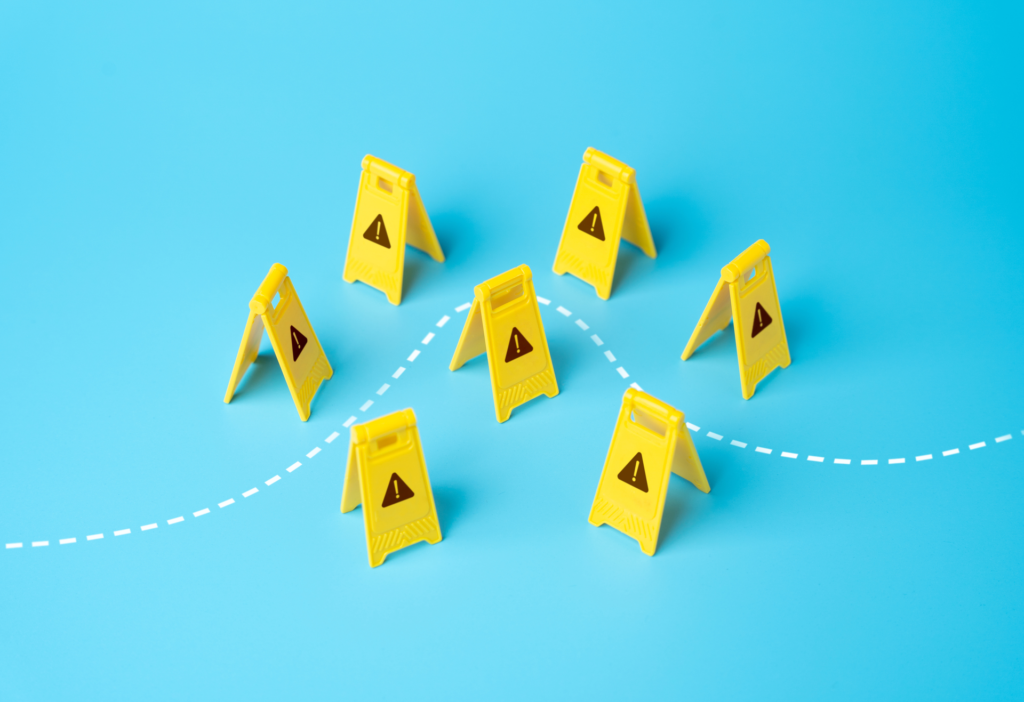Table of contents:
It is essential and advisable to assess the potential risks that may occur in order to ensure success in any project. Risks are an inevitable part of any project development, but there are various ways you can mitigate and possibly avoid their occurrence for a successful project outcome. This is why it’s crucial to conduct a thorough risk assessment during the project discovery phase, whether you’re working on product discovery, project planning, or software development.
In this guide, we will explore the intricacies of risk evaluation. We will explain what it means and provide a detailed approach to how you can assess risk in your project discovery phase and best practices to help you ensure your project is on track.
What is Project Risk Assessment?
Project risk assessment is a formal procedure that analyzes potential risks that could hinder a project. The team identifies these risks and then prioritizes them based on their impact on the project’s success. Some project risks could result from internal factors such as budget overruns, time constraints, and infrastructural challenges.
Other times, external factors like market shifts or changes in customer demands can relate to risks. Assessing all risks that can arise during a project can enable teams to take the necessary steps to address them before they escalate into more significant problems.
A risk assessment should begin in the initial phase of any project—the discovery phase. At this stage, the project’s goals, objectives, challenges, and scope are clearly defined. By assessing risks at this stage, the development teams can anticipate obstacles and hindrances, develop strategic measures to mitigate them, and establish a clear path forward that guarantees a successful outcome. After all, the aim of risk assessment in every project is to minimize the impacts of threats and maximize opportunities that can ensure the project’s success.
How Do You Assess a Project Risk?
The processes of assessing risks differ for each project. Every project has unique methods, strategies, and even tools leveraged during the development stages, as are the risks involved. To effectively assess potential risks in any project, you need to utilize a structured approach that carefully examines events, probabilities, impacts, and triggers. Let’s look at some key elements that make up a comprehensive project risk assessment:
#1 Risk Event: Identifying Potential Circumstances
A risk event refers to the actual conditions or incidents that have the potential to impact and affect the outcome of your project. These occurrences can stem from minor inconveniences to major project development issues. A supplier could delay in providing the necessary equipment for production; other times, it might result from the loss of a key development team member.
As previously mentioned, it is crucial to identify all risks that could potentially hinder or pose a risk to the project during the product discovery stage. Analyze as many risk events as possible by communicating with other team members, stakeholders, and technical teams.
#2 Risk Time Frame: When Will It Happen?
We can often predict that project risks will occur at a particular time in the development stage. It might not be relevant as it begins, but understanding the risk time frame is crucial because some risks become significant later. For example, risk occurrences may be higher at a particular time of the year due to a regulatory change.
This change can also depend on your industry’s legal framework. In the context of product discovery, you might experience certain risks arising during market research or the prototype stage. Determining and knowing at what sales season or time of the year to expect these risk events allows for better preparation.
#3 Probability: How Likely Is It to Happen?
Another essential factor you must consider is the likelihood or probability of a risky event occurring. What this entails is an estimation of the possibility that a particular risk will occur. Sometimes, determining the occurrence of different risks can be relatively straightforward.
For instance, a delay in receiving customer feedback during project development is highly probable. However, the likelihood of a natural disaster affecting your supply chain is significantly lower. Having a reliable estimate of each risk probability helps you prioritize accordingly.
#4 Impact: How Will It Affect the Project?
After successfully estimating the likelihood of each risk event, you need to weigh in on how this risk will affect your project. Different risks have different impacts on your project. This necessitates assessing the potential impact of the risk event on your project timelines, budgets, and even the final product.
Minor risks might result in a delay of a week or a month, but a major issue usually requires a complete project do-over. Determine each risk event’s positive and negative risks and evaluate their impact on your organization.
#5 Factors: What Might Trigger the Risk Event?
Finally, consider the underlying causes. Risk events rarely happen in isolation. You need to identify the factors that could trigger a risk to occur. Most of the time, these risks stem from an initial event. Other times, these risks may arise due to inefficiencies in carrying out crucial tasks earlier. For example, in a project discovery process, not having a clear or detailed understanding of the client’s requirements could be a key trigger for scope creep. Identifying these precursors helps either prevent the risk or at least mitigate its effects.
Steps for a Project Risk Assessment
It is crucial to possess a comprehensive understanding of the factors that can contribute to a project risk, as we have recently discussed. Now, we will look at important steps in conducting a project risk assessment. This well-defined steps approach will ensure your project stays risk-aware and risk-averse throughout its lifecycle.
Step #1: Risk Identification
The first step involves gathering your entire team and brainstorming to identify all potential risks to the project. You can review documents similar to your project and past project files. Looking back at these materials helps you understand external, internal, and legal risks. Leave no one behind during the risk identification process.
Interview all departments potentially impacted by the potential risk. Your technical teams and even stakeholders should be actively involved. You can even consult experts outside your organization for professional insights. By broadening your scope, you can minimize the likelihood of ignoring significant risks.
Step #2: Risk Classification
After properly identifying all possible risks during the project discovery phase, you must adequately categorize them. During this step, you must tag each risk based on its origin (internal vs. external) or its impact on specific aspects of the project, like cost, timeline, or deliverables.
Risk classification will enable you to develop strategies and control levels to manage each risk and influence the project outcome. Based on the established risk classification, you can prioritize each risk based on its severity to enable you to manage them effectively.
Step #3: Risk Analysis
This stage requires assessing each risk’s potential impact on the project. Ask yourself: If this risk materializes, how will it impact the project’s budget, timeline, and quality? This is crucial not only to prevent potential negative risks but also to ensure that you are implementing strategies to mitigate potential positive risks. Measure the impacts of the project risk using qualitative and quantitative assessments.
The qualitative assessment determines the probability of potential outcomes, such as a delay or a complete overhaul. Meanwhile, the quantitative assessment puts a figure on the impact of a risk should it occur. Several product discovery techniques, like scenario planning and impact mapping, enable your project teams to quantify the potential damage caused by each risk.
Step #4: Risk Mitigation
At this stage, you have to employ proactive strategies for each risk. Each high priority risk necessitates the development of mitigation strategies. These high-priority risks will have the most impact, and your team must work hard to prevent them. For instance, after identifying technology and infrastructural flaws as risks during the risk identification stage, you should implement a mitigation strategy that involves regular software updates and backups.
You can also schedule regular maintenance for infrastructural equipment. Consider cross-training your team members in case of understaffing to ensure uninterrupted project progress. Working hard to reduce this risk’s impact is a crucial step during a project risk assessment.
Step #5: Risk Monitoring
Your team must continuously monitor each project risk as they evolve. Regularly monitor and test your occasionally implemented risk plans. Monitor risk indicators throughout the project lifecycle, particularly during critical stages like the project discovery phase and product discovery milestones. Regular check-ins and updates to your risk assessments are important for emergencies that might pop up, ensuring you have a plan that keeps you ahead of potential issues.
How We Can Help
At North South Tech, we’ve guided projects through risky waters, and we know exactly where the icebergs hide. Risk assessment isn’t just a checkbox for us—it’s the foundation of every successful project we undertake. Working with small startups and enterprise clients has taught us that thorough risk evaluation during discovery prevents costly surprises later.
Your project deserves more than a generic risk checklist. We dig deeper, examining both obvious and hidden risks specific to your industry, technology stack, and business goals. Through systematic risk identification and practical mitigation strategies, we help protect your investment and keep your project on its intended path.
The number of successful projects in our portfolio isn’t accident-free because of luck; they succeeded because we anticipated challenges before they materialized. We’re ready to apply this battle-tested approach to your next project.
Are you seeking to enhance the risk management of your project? Let’s talk about protecting your next initiative.






